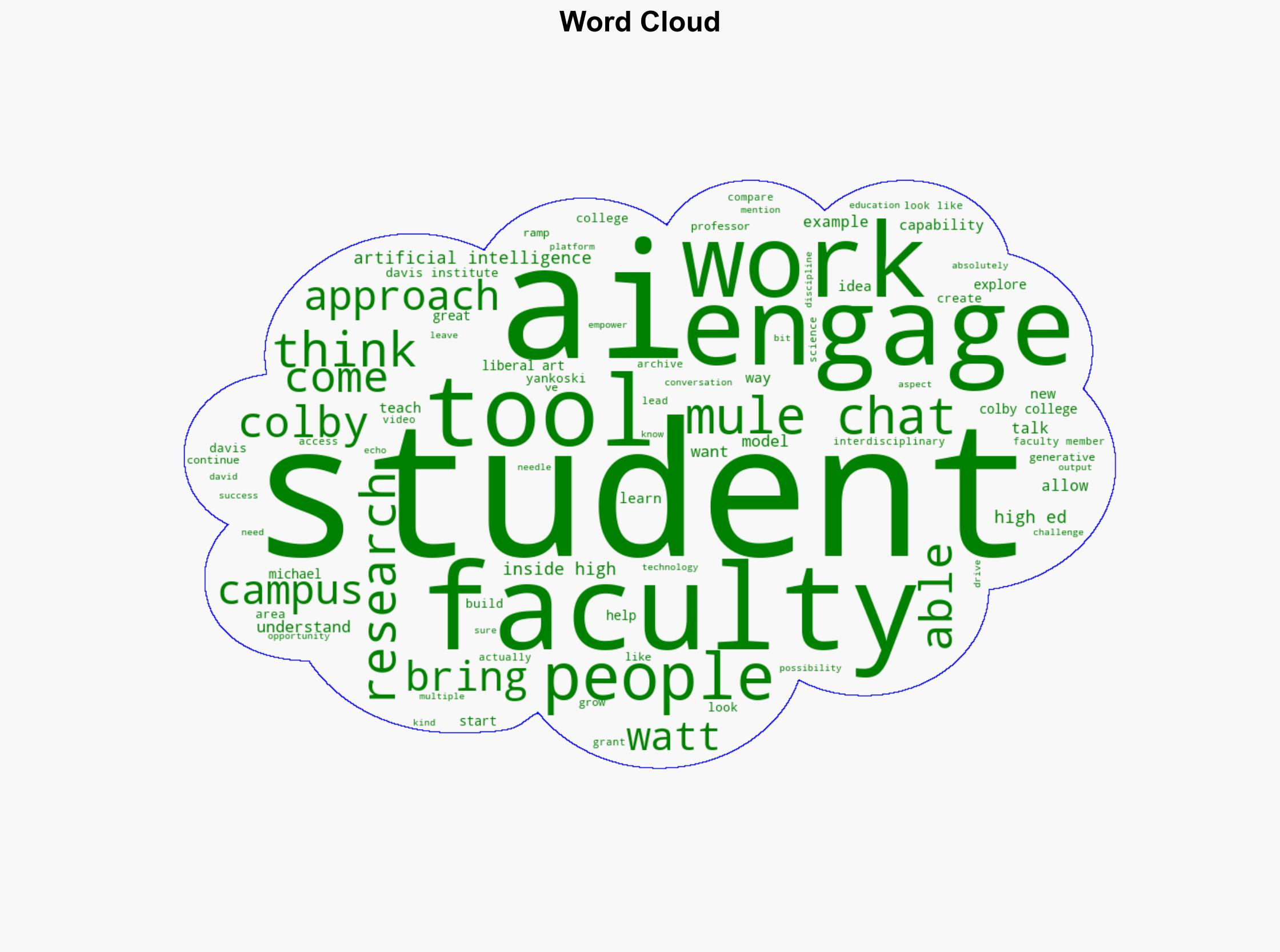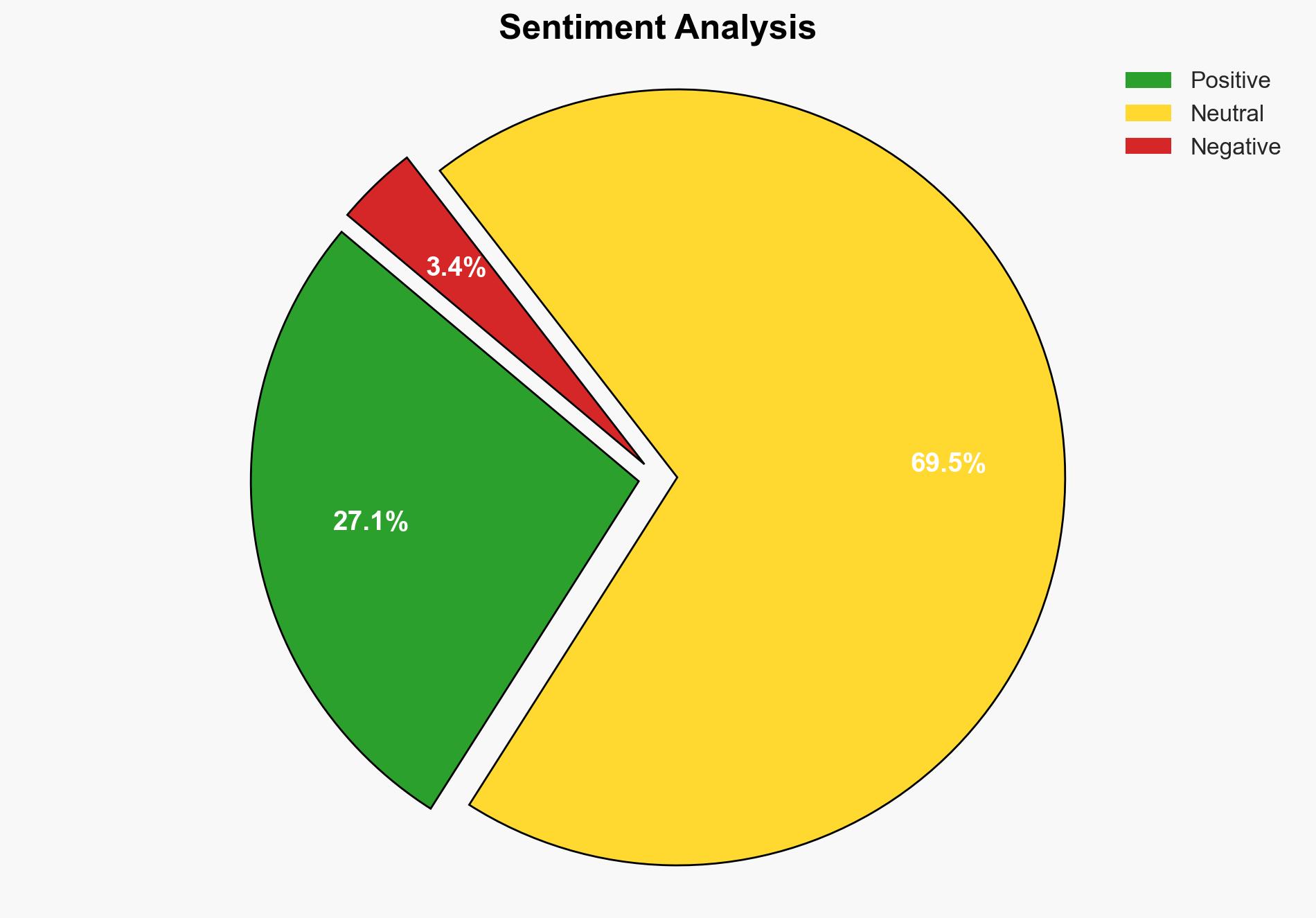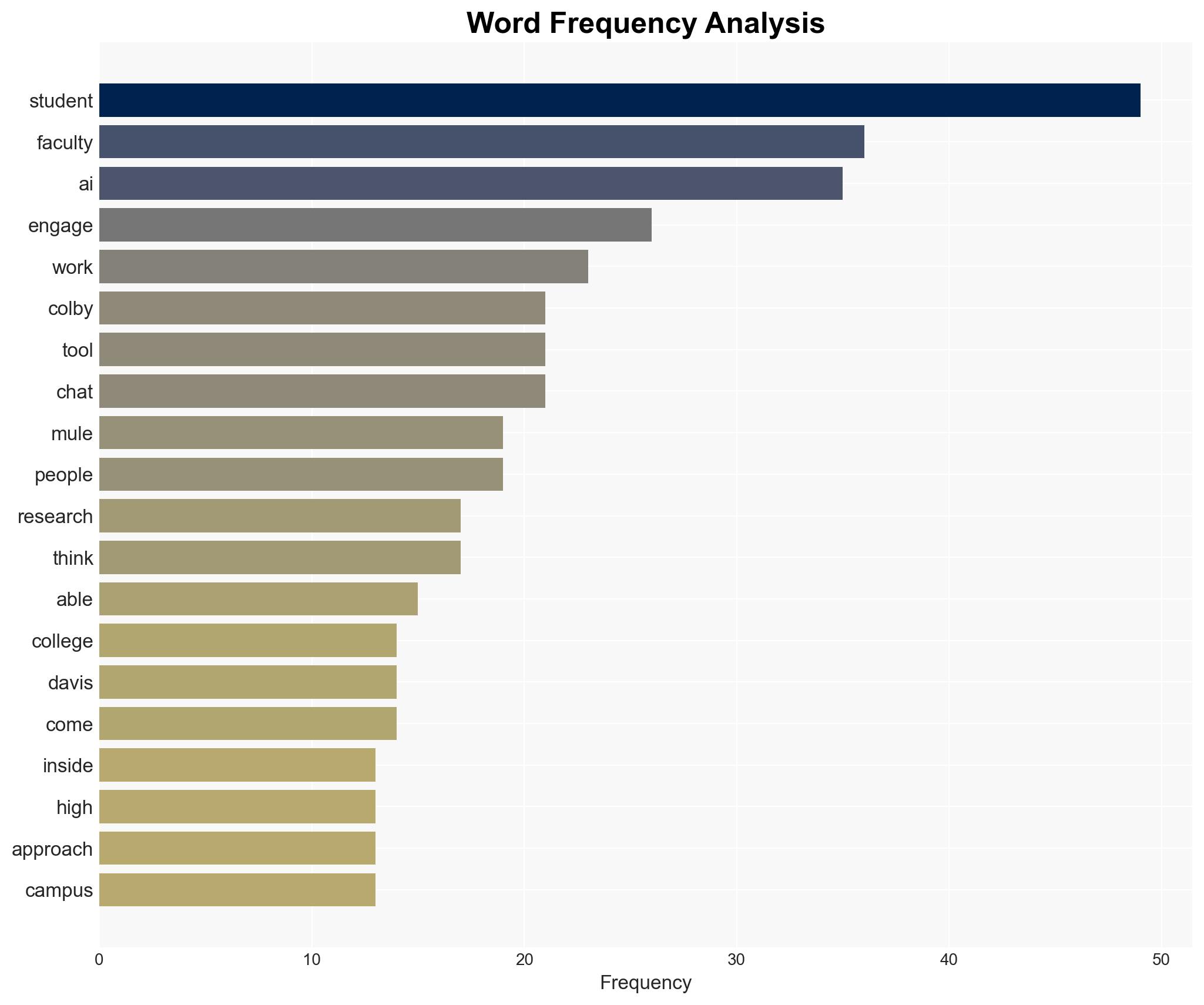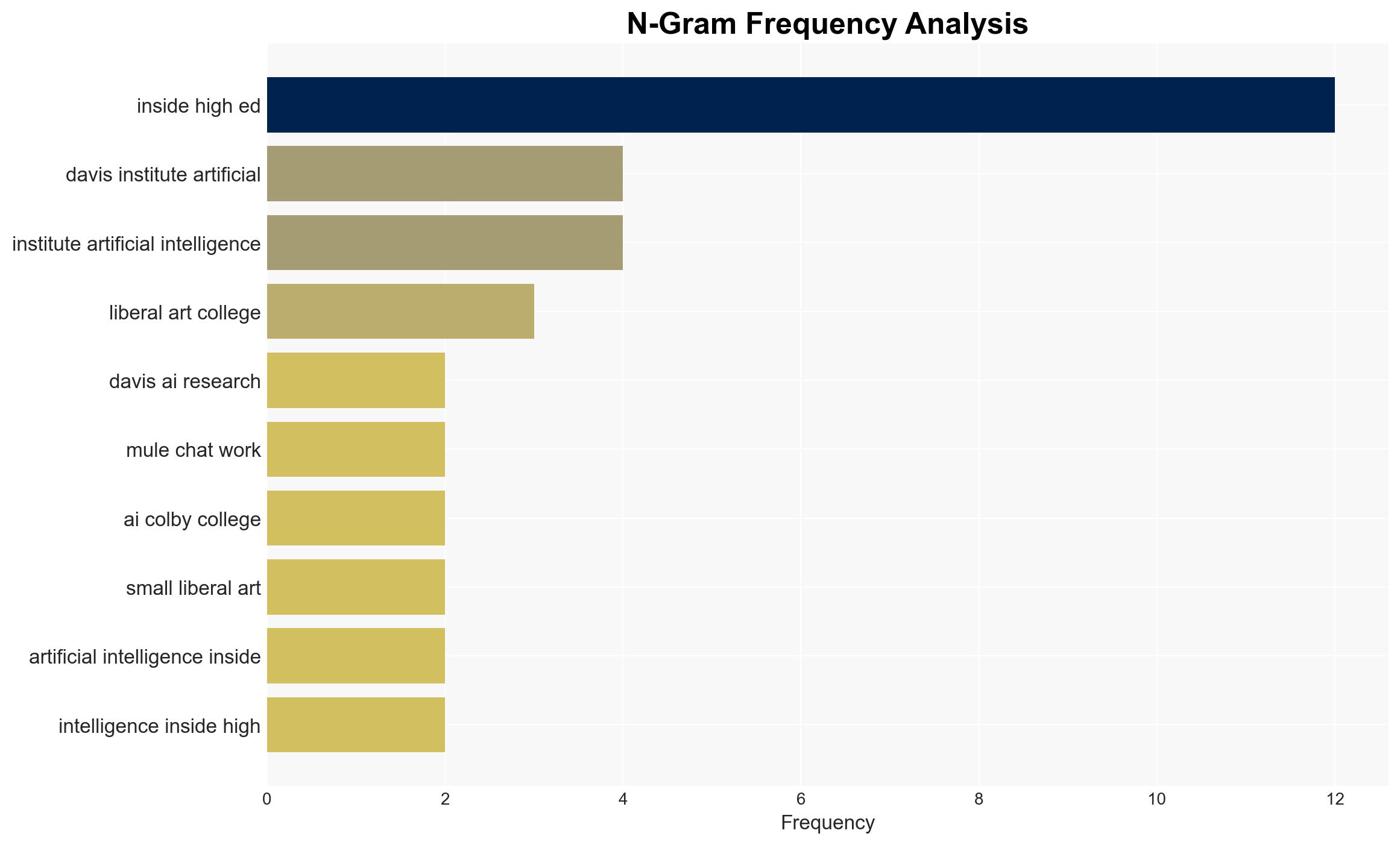Listen A Liberal Arts College Goes All In on AI – Inside Higher Ed
Published on: 2025-11-14
AI-powered OSINT brief from verified open sources. Automated NLP signal extraction with human verification. See our Methodology and Why WorldWideWatchers.
Intelligence Report: Listen A Liberal Arts College Goes All In on AI – Inside Higher Ed
1. BLUF (Bottom Line Up Front)
Colby College’s initiative to integrate AI into its liberal arts curriculum is a pioneering move that could set a precedent for similar institutions. This strategy is likely to enhance educational outcomes and research capabilities, but it also poses risks related to data privacy and the potential for uneven adoption across disciplines. Confidence Level: Moderate. Recommended Action: Develop comprehensive guidelines and training programs to ensure equitable and secure AI integration.
2. Competing Hypotheses
Hypothesis 1: Colby College’s integration of AI will significantly enhance its educational and research capabilities, setting a benchmark for other liberal arts institutions.
Hypothesis 2: The integration of AI at Colby College may face significant challenges, including resistance from faculty, data privacy concerns, and uneven adoption, limiting its overall impact.
Assessment: Hypothesis 1 is more likely given the proactive steps taken by Colby College, such as the development of Mule Chat and the establishment of the Davis Institute for Artificial Intelligence. However, Hypothesis 2 cannot be dismissed due to potential resistance and privacy issues.
3. Key Assumptions and Red Flags
Assumptions: It is assumed that faculty and students will be receptive to AI integration and that adequate resources will be available for implementation.
Red Flags: Potential resistance from faculty who may be skeptical of AI’s role in education. Privacy concerns related to the use of AI tools like Mule Chat.
4. Implications and Strategic Risks
The integration of AI at Colby College could lead to significant advancements in educational techniques and research methodologies. However, there are risks of data breaches and privacy violations. Additionally, if AI adoption is uneven across disciplines, it could lead to disparities in educational quality and outcomes.
5. Recommendations and Outlook
- Develop comprehensive guidelines and training programs for faculty and students to ensure equitable and secure AI integration.
- Implement robust data privacy measures to protect sensitive information.
- Best Case: Successful integration leads to enhanced educational outcomes and positions Colby as a leader in AI education.
- Worst Case: Resistance and privacy issues hinder AI integration, leading to uneven educational outcomes.
- Most Likely: Gradual adoption with initial challenges, eventually leading to improved educational practices.
6. Key Individuals and Entities
David Watts, Director of Colby College’s Davis Institute for Artificial Intelligence; Michael Yankoski, Research and Teaching Scientist at Davis Institute.
7. Thematic Tags
Cybersecurity, Student, Faculty
Structured Analytic Techniques Applied
- Adversarial Threat Simulation: Model and simulate actions of cyber adversaries to anticipate vulnerabilities and improve resilience.
- Indicators Development: Detect and monitor behavioral or technical anomalies across systems for early threat detection.
- Bayesian Scenario Modeling: Quantify uncertainty and predict cyberattack pathways using probabilistic inference.
Explore more:
Cybersecurity Briefs ·
Daily Summary ·
Support us




Thematic Tags: Cybersecurity, Student, Faculty

